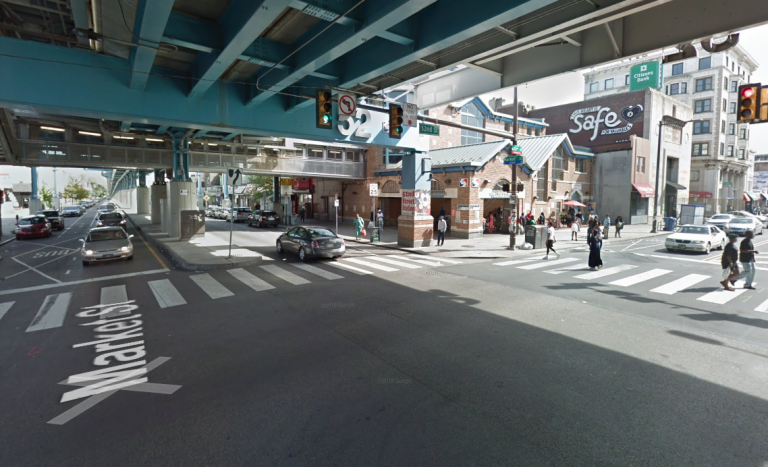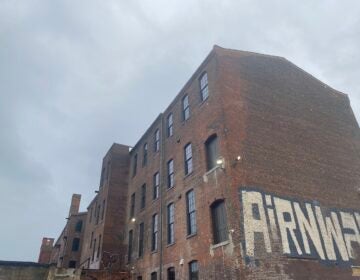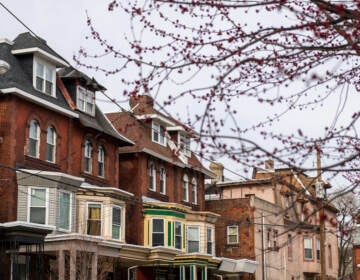Bold strokes in W. Philly Promise Zone housing plan, but no funding punch to back it up
What good are big plans without any funding?

A view under the El at 52nd Street in West Philadelphia. (Google Maps)
This story originally appeared on PlanPhilly.
—
What good are big plans without any funding? That’s the question the city Planning Commission grappled with Tuesday, when confronted with a comprehensive housing strategy for the West Philadelphia Promise Zone.
The Promise Zone designation arises from a federal program, created during President Barack Obama’s second term, that covers a handful of low-income areas across the country. It gives projects located in those areas a boost when applying for federal funding across an array of fronts, including housing.
But there is no funding attached to the policy, seen at the time of its creation as an effort at executive action in the absence of willing Republican partners on Capitol Hill.
“The term ‘Promise Zone’ indicates that there is some way to achieve the promise, and to achieve the promise you need funding,” said Planning Commission member Cheryl Gaston, a zoning lawyer with Spruce Law. “Is there anything attached to this that could encourage the eventual adoption of [the plan’s recommendations]?”
The 131-page comprehensive housing strategy highlights proposals for 11 focus areas across the West Philadelphia Promise Zone, and includes a parcel-by-parcel analysis of those focus areas, chosen in consultation with community stakeholders.
The level of detail reflects the high degree of community input. For example, the 52nd Street Station focus area includes a proposal for infill on residential Ranstead Street. Located a couple dozen yards to the south of the bustling Market-Frankford El stop, the small rowhouse block is over 25 percent vacant and in dire need of reinvestment. But only a detailed analysis would have produced the call for new housing on the tiny street, which is little used except by local residents.
Those who worked on the housing report argued that this level of comprehensive planning would be useful, especially given the Promise Zone’s shelf life.
“The 10-year-long designation provides us with an opportunity to do a comprehensive planning strategy like this, so we are ready for those funds as they become available,” said Samantha Porter, director of place-based initiatives for the city’s Office of Community Empowerment and Opportunity.
Neighborhoods covered by the West Philadelphia Promise Zone face an array of challenges, the housing report says. Thirty-seven percent of renters are paying more than half their incomes for housing. The available affordable units are largely concentrated in the lowest-income parts of the area, such as Mantua, Belmont, and portions of Mill Creek. By contrast, Spruce Hill and University City have almost no subsidized units. (Section 8 vouchers are similarly utilized most highly in the poorest areas.)
Despite the need for subsidized housing, the existing supply could easily shrink in the near future. The report ticks off several subsidized multifamily apartment developments that face expiring affordability, including University Square Plaza, Stephen Smith Towers, and Mantua Presbyterian Apartments.
Research has shown that many landlords who own time-limited subsidized housing voluntarily decide to renew affordability limits. But the exception is private-sector landlords in hot markets, areas like West Powelton and Mantua that are experiencing market pressures from Drexel University’s growing student body.
Addressing those issues, and other redevelopment proposals outlined in the lengthy report, requires money, however.
“The reality is the resources just don’t exist,” said Anne Fadullon, the city’s director of planning and development. “Frankly, the federal government has pulled out of the affordable-housing business. So has the state. The city is doing everything it can to keep up, but until we get some help, we are really going to be faced with a lot of these challenges.”
WHYY is your source for fact-based, in-depth journalism and information. As a nonprofit organization, we rely on financial support from readers like you. Please give today.







